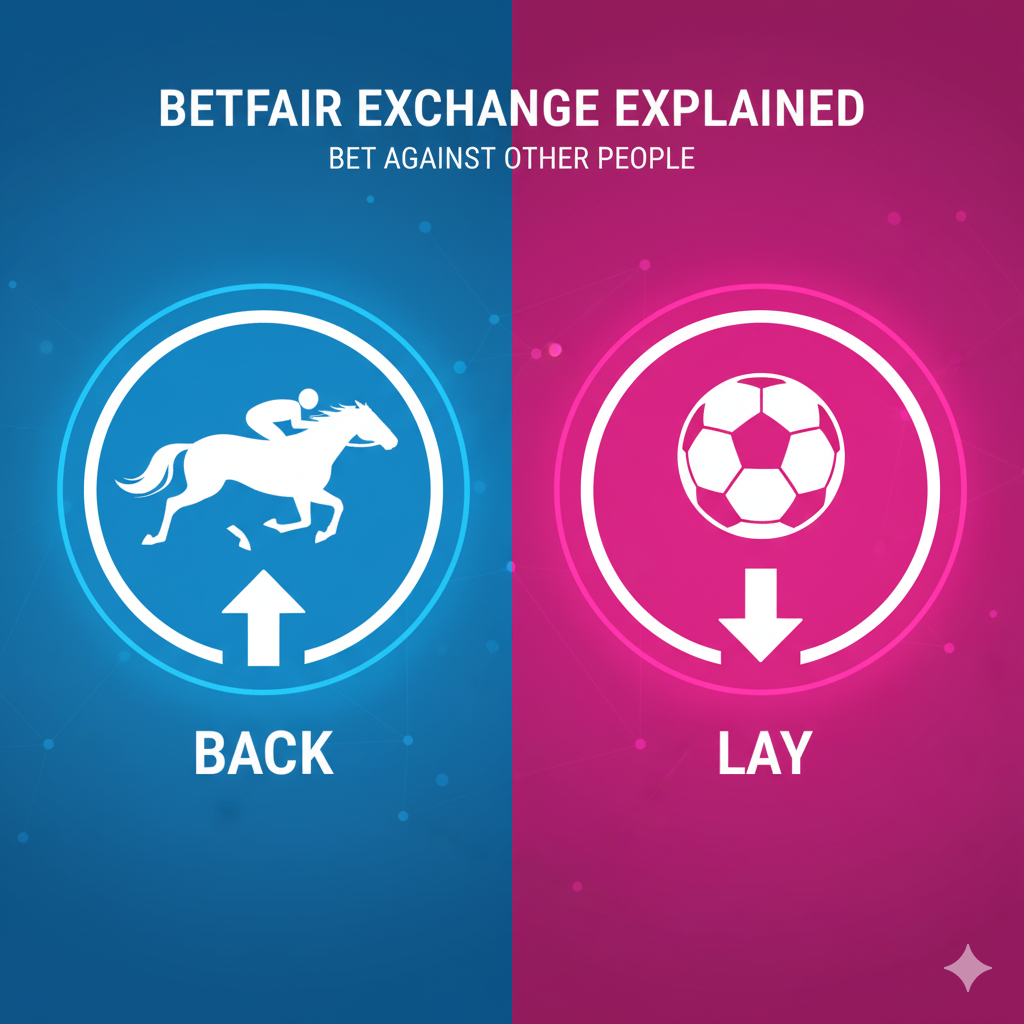So, you’ve done it. You’ve spent countless hours coding, testing, and perfecting a Betfair bot. It’s a powerful piece of software, and now you’re thinking about how to sell your Betfair bot and turn that hard work into a business.
But here’s the reality: you can’t just put your app on a website with a “Buy Now” button.
Selling a commercial Betfair bot means transforming from a private developer into a Betfair software vendor. Betfair (and the UK Gambling Commission) must ensure your app is secure, compliant, and responsible.
Consequently, you must pass a formal certification process. This guide will walk you through the exact steps you need to take to get your Betfair bot certified and ready for sale.
Phase 1: Build a Compliant Bot with Betfair UKGC Compliance in Mind
Before you even think about applying, you must build your bot to meet Betfair’s non-negotiable standards. If you ignore this, you will fail the certification process before you even start.
1. Start with the Right Tools First, you need to register on the Betfair Developer Program portal. This is your starting point. You’ll begin with a free Betfair API key (often called a “Delayed App Key”), which is your sandbox for all initial development and testing. If you’re not sure what that involves, you can read this guide on getting your Betfair API key.
2. Master the “Product Requirements” This is where many developers go wrong. Your bot isn’t just your product; it’s a gateway to Betfair’s ecosystem and other people’s money. Therefore, you must adhere to their rules for Betfair UKGC compliance:
- You Must Use the Stream API: Do not “poll” the REST API every second for price changes. This is inefficient, and Betfair will throttle your app. Betfair requires all commercial applications to use the Betfair Stream API for all dynamic data, such as prices, market changes, and order status.
- You Must Be UKGC Compliant: Your Betfair bot is officially gambling software. As a result, it must meet the UK Gambling Commission’s (UKGC) technical standards. This includes, but is not limited to:
- Clearly and persistently displaying the user’s current balance.
- Clearly and persistently displaying the time of day.
- Including prominent links to responsible gambling resources.
- Ensuring your bot’s functionality doesn’t encourage irresponsible behavior (for instance, “chasing losses” or “gambling on credit”).
If your bot lacks these features, you must add them. They are not optional.
Phase 2: Get Your ‘Software Vendor Licence’ & Pass Betfair Bot Certification
Once you have a functional and compliant bot, it’s time to make it official. This phase is the most critical and is centered on getting your Betfair bot certified.
1. Apply for the “Software Vendor Licence” Log in to the developer portal and formally apply for this Software Vendor Licence. This is the official designation that allows you to distribute your app to other Betfair customers and become a Betfair software vendor.
2. Prepare for the “Cost of Doing Business” This professional certification is not free. The total cost to sell your Betfair bot involves one-time fees paid to Betfair.
- ~£499 Licence & Certification Fee: This is the main fee you pay for Betfair’s team to conduct a full security and compliance audit of your application.
- ~£299 “Live App Key” Activation Fee: After passing the audit, you pay this fee to activate the live Betfair API key your customers will use. This also gets your commercial Betfair bot listed in the App Directory.
The total investment is around £798. This fee ensures that only serious, secure, and compliant software vendors make it into the ecosystem.
3. Pass the Security Certification (The Big Test) This is the main hurdle. To pass the Betfair security review, your application must be 100% secure, as defined by their Security Certification Checklist. You will fail if you don’t meet the following requirements.
Here is your active security checklist:
- [ ] You MUST NOT store or log a user’s Betfair username or password. Never. Ever. Do not store this data in plain text, in a database, or anywhere on your servers.
- [ ] You MUST encrypt credentials for “Remember Me” features. If you offer this function, you must store credentials locally on the user’s machine and use strong encryption (e.g., AES-128 minimum).
- [ ] You MUST use the official “Vendor Services API.” This official “Vendor Services API” is essential for managing subscriptions without you ever needing to know their Betfair login details.
- [ ] You MUST obfuscate your Application Key. Your software’s unique App Key must be hidden in your compiled code. You cannot leave it in a plain text config file.
- [ ] You MUST communicate directly with the Betfair API. You cannot route your app’s API traffic through your own servers as a proxy.
- [ ] You MUST include a “Log Out” function that properly terminates the user’s API session.
Phase 3: Launch Your Commercial Betfair Bot as a Business
Congratulations! You passed certification, paid your fees, and are now an official Betfair software vendor. You are finally ready to sell your Betfair bot.
1. Set Up Your Digital Storefront You are now an independent software company. Consequently, you will need:
- A Professional Website: This is your storefront. This is where you will market your bot, explain its features, and handle sales.
- A Payment Processor: You’ll need a way to take payments (like Stripe or PayPal) to manage your customer subscriptions.
2. Choose Your Business Model How will you charge for your bot?
- SaaS (Software as a Service): This is the industry standard. Users pay a recurring monthly or annual subscription fee. This model is highly recommended, as it provides you with a steady income to maintain the bot, push updates, and provide customer support.
- Perpetual Licence: This involves a large, one-time fee to “own” the software. This is less common today.
3. Get Listed in the Betfair App Directory Finally, once you’re approved, you can have your bot listed in the official Betfair App Directory. This is a huge stamp of legitimacy and a vital source of traffic from traders actively looking for certified tools. Here, you’ll be listed alongside reputable, long-standing vendors like BFBotManager and Traderline. (You can see a comparison of popular options in these Betfair bot reviews).
Let’s Be Candid: How Difficult is the Betfair Bot Certification?
So, just how hard is it to get your Betfair bot certified?
Let’s be candid. The process is not creatively difficult, but it is technically and procedurally very strict. Betfair isn’t judging your trading strategy. They don’t care if your bot makes money.
Betfair cares about two things: Security and Compliance.
The real difficulty is a mental shift for most developers. The “secret sauce” of your bot is 10% of the challenge. The other 90% is building a professional, secure, and robust application that meets their checklist.
The main hurdles where developers fail are:
- Security: Failing to properly handle credentials. Trying to store a user’s password in your own database is an instant failure.
- The Vendor API: This is the big one. You must build a backend system that integrates with the Vendor Services API to manage your subscriptions. This adds a layer of complexity (web servers, databases, API calls) that many bot-builders don’t anticipate.
- Compliance: Forgetting the “boring” stuff, like the responsible gambling links or the clock.
In short, it’s not a competition. It’s a compliance test. If you follow the checklist to the letter, you will pass.
The Tools of the Trade: Your Tech Stack for a Commercial Betfair Bot
You can’t just build a commercial-grade bot with a simple script. You need a professional “tech stack.” Here are the platforms and tools you’ll need to build your bot and pass certification.
1. Core Programming Language & API Libraries
Whether you are building a Python Betfair bot for commercial use or a C# one, your tools must be robust.
- Python: Highly popular for its data analysis and automation power.
- API Wrapper: Use a library like betfairlightweight to handle the complex API communication (both REST and Stream) and authentication.
- HTTP Requests: The requests library for simple API calls.
- C# / .NET: The traditional choice for robust, high-performance desktop applications on Windows.
2. The Business & Subscription Layer
This is the part that connects your software to the Vendor Services API and your payment processor.
- Payment Processor: Stripe is the developer’s choice.
- Backend Server: You need a small web application to “catch” webhooks from Stripe.
- Python: A micro-framework like Flask or FastAPI is perfect.
- C#: You would use ASP.NET Core.
- Process: User pays on your site -> Stripe sends a webhook to your backend -> Your backend calls the Betfair Vendor Services API to grant that user access.
3. Security & Deployment Tools
These tools help you meet the security checklist.
- Code Obfuscation (to hide your App Key):
- Python: Use a tool like PyInstaller or py2exe to bundle your Python scripts into a single
.exefile. - C# / .NET: Use a tool like Obfuscar to make your compiled code harder to reverse-engineer.
- Python: Use a tool like PyInstaller or py2exe to bundle your Python scripts into a single
- Local Data Encryption (to store credentials):
- Python: Use the cryptography library.
- C# / .NET: Use the built-in
System.Security.Cryptographyclasses.
Why You Should Pay for Help
As a developer, your instinct is to do everything yourself. For this project, that’s a risky impulse. This isn’t a typical SaaS app; it’s software that operates in the regulated gambling sector and moves real money.
Here’s where to spend money to be on the safe side:
- Legal Consultation: This is the most important. You are selling “gambling software,” which puts you under the authority of the UK Gambling Commission. Hire a solicitor who specializes in UK gambling law. They will help you:
- Understand your full legal obligations as a software vendor.
- Review your bot’s features to ensure they meet the Remote Technical Standards (RTS).
- Draft your Terms of Service (ToS) and Privacy Policy.
- Security Audit / Penetration Test: Before you submit your bot to Betfair, pay an independent security firm to audit it. This makes it far more likely you’ll pass the Betfair security review on the first try.
The Sobering Reality of Betfair API Security
Betfair’s security checklist isn’t just bureaucratic red tape. It’s the core of Betfair API security and is designed to prevent catastrophic financial loss for your customers and you.
Think about this: your bot is an “always-on” target that has API keys with permission to place bets. If a hacker compromises your bot, they can:
- Steal API Keys: If your bot is reverse-engineered, a hacker can steal the API key.
- Drain User Accounts: While API keys thankfully can’t be used for withdrawals, a hacker can use them to place thousands of “losing” bets against their own “winning” bets, effectively transferring all the money from your user’s account to their own.
- Destroy Your Reputation: A single security breach will permanently destroy your business.
This is why Betfair is so strict.
- Why no storing passwords? Because if your database is hacked, every single user’s Betfair account is compromised.
- Why obfuscate your App Key? So a hacker can’t easily find it and impersonate your bot.
- Why use the Vendor API? So you never, ever have to see or handle a user’s credentials, removing you from that chain of liability.
Your bot is a vault. Treat its security accordingly.
The Unseen Challenge: Supporting a Betfair Bot as a Solo Dev
You’ve launched. The sales are coming in. Congratulations. Now the real job begins. Supporting a Betfair bot as a solo person is a massive, long-term commitment. Be prepared for:
- The Customer Support Grind: You are now on-call. When a user’s bot stops working, they are losing money (or believe they are). They expect an answer now. You will be juggling bug reports, feature requests, and “how-to” questions.
- The Marketing Treadmill: To get sales, you’ll need to spend at least 50% of your time on marketing: writing blog posts, managing ads, and building a community.
- The “Betfair Update” Scramble: Your bot is entirely dependent on the Betfair API you don’t control. If Betfair changes an API endpoint or has an outage, your bot breaks. You will have to scramble to fix, test, and deploy an update.
- The Release Cycle: This isn’t “fire and forget.” As per Betfair’s rules, even small updates must be submitted for review.
Being a solo founder means you are the CEO, developer, marketer, and customer support agent, all at once. It’s incredibly rewarding, but it is not a “passive income” stream by any definition.
Your 5-Step Path to a Certified Commercial Betfair Bot
Feeling overwhelmed? Don’t be. Here is the entire process in five simple steps.
- Build Compliantly: Build your bot using the Stream API and ensure you meet all UKGC standards.
- Apply Officially: Submit the Software Vendor Licence application via the Betfair Developer portal.
- Pay the Fees: Invest the required £499 certification fee and £299 key activation fee.
- Pass Security: Prove your bot is secure. This means using the Vendor Services API for subscriptions and never storing user passwords.
- Launch Your Business: Sell the bot on your own website (a subscription model is best) and get listed in the Betfair App Directory for visibility.
Following this path is the only official way to sell your Betfair bot. It’s a serious process, but it protects customers and gives them the confidence to pay for and use certified software. Good luck.

Betfair Bot Reviews: Which One Suits You Best?
Which Automated Betfair bot Trading Software is Right For You? Choosing the best Betfair bot in 2025 can be a…

The Ultimate Betfair Trading Guide: History, Strategies
Betfair trading is the secret that professional gamblers don’t want you to know. For decades, the game was rigged. You…

Backtesting Guides
Backtesting Guide — Principles & MarketBook Replay | BotBlog Backtesting guides Published: 2025-11-11 • BotBlog Backtesting Guide — Principles &…

Lesson 7 — Risk management & deployment
Skip to content Lesson 7 — Risk management, hedging & deployment Final crypto lesson: implement hedging/green‑up, enforce risk limits and…

Lesson 6 — Backtesting & simulation (Jupyter)
Skip to content Lesson 6 — Backtesting & simulation (Jupyter) Simulate strategies in Jupyter: load historical ticks/candles, replay data, simulate…

Lesson 5 — Webhooks & Pine alerts
Skip to content Lesson 5 — Webhooks & Pine alerts Build a secure webhook receiver for TradingView Pine alerts, validate…

Lesson 4 — Order placement & fills (testnet)
Skip to content Lesson 4 — Order placement & fills (testnet) Place limit and market orders on exchange testnets, handle…
